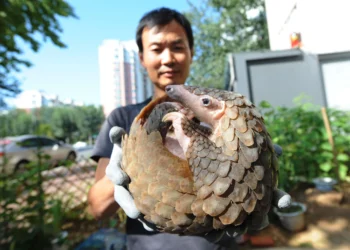Death is always incomprehensible and that is especially true for children. They often do not fully realize what death means and react differently to it than adults. The death of a pet is often something difficult for a family. The animal often played a major role in family life. But what do you do with the children when a pet dies?
Your pet dies, then what?
The death of a beloved pet is not easy for anyone. A dog, cat, or parrot can easily be part of the family for more than ten years, but smaller animals can also be very important to the owner. There will come a time when animals here grow old, get sick and then die. There are several ways to deal with a dead pet.
When the vet puts him to sleep, you can choose to leave the animal with the vet, but it can also be taken home so that it can be buried/cremated yourself. Nowadays there are very good animal crematoriums or cemeteries where they handle the pet very professionally. It is nice that people can decide for themselves what happens to the animal, but what is the role of children in this?
Reading suggestions; Things you should learn to take care of your pets
Children and the deceased pet.
Children often do not yet fully realize what death means. Children’s responses to death can be very different. Some may have been in contact with death (of humans or animals) before and others have not yet. Some find it very scary and others don’t.
The death of a beloved pet is often quite violent for children. They experience the animal when it is still healthy, then gets sick/old, and then comes the time when it dies. When an animal dies at home from old age, it is not wise to get rid of the animal before the children have seen it.
Reading suggestions; 200+ Unique Female Cat Names for Your Cute Companion
They cannot understand why the animal is suddenly gone. Often the parents are afraid that the children will be traumatized, but sooner or later they will come into contact with death. Age is not important here.
Put to sleep at the vet.
When the animal is so sick that it has to be put to sleep at a vet, you have a different choice. The animal can be left at the vet or taken home again. So a child will either see the animal go away alive and come back dead or see it go away alive and never come back at all. A good consultation with the children is important here. By talking about it, the child can already realize more about what will happen to the animal. 
The child can then decide for itself whether it is afraid when the animal comes back and no longer breathes, or whether it is nice to see the animal again for a while.
The child can of course also go to the vet and be there when it is put to sleep. For this, however, the child must fully realize what is going to happen to the animal. It may be better not to let the child be there when the animal gets the injection because seeing an animal die is different from seeing it dead.
Reading suggestion; Black Dog Names; 400+ Names for Black Dogs
Watching an animal die can create other traumatic images in children that can also cause fear of doctors or syringes. It can then be decided to let the child stay in another room for a while until the animal has died and then bring it in again. It is then wise not to leave the child alone, but perhaps with another family member to whom the child can ask questions or find support.
Farewell ritual.
After the death of the pet, a farewell ritual can be organized for him. When the animal is buried in the garden, children like to be a part of it. For example, they can make a DIY pet urn or they can choose the box in which the animal is buried, or the stone that will be placed on the grave, or make a drawing for the animal.
The farewell is very important and helps the child to cope with the death of the animal. When the animal is taken to a crematorium, the child can come along and say one last goodbye to the animal. The child may also like to take a tuft of the animal’s hair home so that the animal still seems to be around a bit.
Communicating is important.
Children often realize more than adults think. Very young children will often remember the death of a pet later, but they probably won’t have suffered any trauma as a result. They may develop more of a sense of death and have problems with it at first, but everyone has a fear of death, so that’s not a serious problem. Talking about the death of a pet is therefore very important.
The child also experiences the animal when it is alive and gets older or sick. When told that animals die when they get old or are seriously ill, the child will understand better when it actually happens. Always ask the child what he wants. When an animal dies at home, it is wise not to remove it immediately.
The child needs some time to process it and after a while can decide if it wants to be with the animal one last time or not. When the animal is put to sleep by a vet, the child should be given the opportunity to decide for himself what he wants. Often the child will not view the pet’s death as a traumatic event later on, but the child has gained a better sense of death. They will then be grateful that they were able to give the animal one last goodbye.









